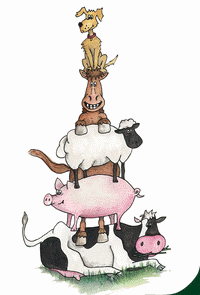New measures to protect against Avian Flu
The Government Chief Vet has confirmed new measures to protect against avian flu that take a more targeted approach to controlling the disease.
Following plans set out earlier this month, all poultry keepers across England must continue to observe strict biosecurity measures, with housing or netting required in higher risk areas.
This new approach will apply from 28 February, when the current prevention zone expires. It gives most keepers the option to let birds outside whilst still taking reasonable precautions against avian flu. The ban on poultry gatherings remains in force.
All poultry keepers - whether they keep a commercial flock or a few chickens in their back garden - must continue to practise strict disease prevention measures, following Defra’s guidance to take steps to reduce the risk of infection via the environment.
Chief Veterinary Officer Nigel Gibbens said: "Effective disease control will always be our priority. H5N8 continues to circulate in wild birds and we must all continue to do everything we can to reduce the risk of disease. All keepers across the country must follow strict mandatory disease prevention measures.
"Based on clear scientific evidence, the risk from wild birds is too high in some areas of England to rely on biosecurity measures alone. That’s why we are requiring birds in Higher Risk Areas to be housed or protected from wild bird contact by netting.
"We believe this is the best approach to control disease, protect birds’ welfare and ensure consumers can buy free range products. As with any disease control measures these will be kept under review based on the latest situation and up-to-date scientific advice."
The risk of disease across the country remains high and measures are likely to be in place until at least the end of April.
This comes as the disease was confirmed in a small flock of chickens at a farm near Haltwhistle, Northumberland on 24 February. A 3km Protection Zone and a 10km Surveillance Zone have been put in place around the infected premises to limit the risk of the disease spreading. The flock contains about 35 birds. A number have died and the remaining live birds at the premises are being humanely culled. A full investigation is under way to determine the source of the infection.
If you suspect any strain of avian flu you must tell your nearest Animal and Plant Health Agency office immediately. Failure to do so is an offence.
All poultry keepers in England (whether they have commercial flocks or just a few birds in a backyard flock) will continue to be required by law to take a range of biosecurity precautions.
For most keepers, housing of birds will no longer be required by law, and they will be able to let birds outside provided they take specific precautions against avian flu. This will allow as much free-range production as possible to continue.
Poultry keepers must continue to follow the existing animal welfare rules.
In England a number of areas have been defined as ‘Higher Risk Areas’. What keepers must do depends on whether they are in one of these areas.
1. Check if you’re in a Higher Risk Area
You can check on the interactive map to see if your premises is within a Higher Risk Area. You are only considered to be in a HRA if the whole of your premises is within the HRA.
2. If you’re not in an Higher Risk Area
You will be able to allow birds outdoors into fenced areas provided the areas meet certain conditions:
- the areas have been made unattractive to wild birds, for example ponds have been netted, wild bird food sources removed
- action has been taken to reduce any existing contamination, such as cleansing and disinfecting concrete areas, wet/boggy areas are fenced off
- assessments have been made of the risk of birds coming into contact with wild birds or contamination from them
You will still be able to keep your birds housed (in permanent or temporary sheds), or into a fenced run which is wholly covered by netting.
3. If you are in a Higher Risk Area
You must either:
(a) keep your birds housed, in permanent or temporary sheds; or
(b) allow birds outdoors but only into a fenced run which is fully covered by netting
4. If you’ve got more than 500 birds
If you keep more than 500 birds you must take some extra biosecurity measures. These include identifying clearly defined areas where access by non-essential people and vehicles is restricted. You must clean and disinfect vehicles, equipment and footwear.

